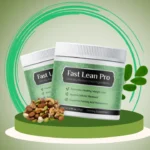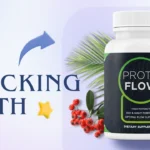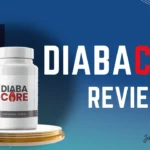Understanding Of Suddenly Shoulder Pain Without Injury
suddenly shoulder pain without injury is something many people experience at some point in their lives. While it’s often associated with injuries, such as falls or overuse, there are times when shoulder pain can occur seemingly out of nowhere.
What Is Shoulder Pain Without Injury?
Shoulder pain without injury refers to discomfort or aching in the shoulder area that occurs without a specific incident or trauma. Unlike pain caused by a fall, strain, or other injury, this type of pain can develop gradually and may not have an obvious cause. It’s important to understand that even though there may be no injury, the pain can still be quite uncomfortable and affect your daily life.

Common Causes of Shoulder Pain Without Injury
Muscle Imbalance: Sometimes, an imbalance in the muscles surrounding the shoulder joint can lead to pain. This can occur when certain muscles become overused or weak, causing the shoulder joint to function improperly.
Poor Posture: Maintaining poor posture, such as slouching or hunching over a computer, can put strain on the muscles and ligaments in the shoulder area.
Repetitive Movements: Certain jobs or activities that involve repetitive shoulder movements, such as lifting or reaching overhead, can lead to overuse of the shoulder muscles and result in pain.
Stress and Tension: Emotional stress and tension can manifest physically in the body, often in the form of muscle tightness and pain, including in the shoulders.
Arthritis: Arthritis is a condition that can affect the shoulder joint, causing pain and stiffness. It can develop over time without any specific injury.
Nerve Compression: Sometimes, nerves in the neck or upper back can become compressed or irritated, leading to referred pain in the shoulder area.
♻️Read Now: A Deep Natural Pain Relief for Menstrual Cramps In 2023!
Symptoms of Shoulder Pain Without Injury
Shoulder pain without injury can manifest in various ways, and the symptoms may vary from person to person. Common symptoms include:
Dull, Aching Pain: A persistent, dull, or aching pain in the shoulder that may worsen with certain movements or activities.
Stiffness: A feeling of stiffness or tightness in the shoulder joint, making it difficult to move your arm freely.
Pain at Rest: Pain that occurs even when you are not using your shoulder, such as when you are sitting or lying down.
Tingling or Numbness: Sometimes, shoulder pain without injury can be accompanied by sensations of tingling or numbness in the arm or hand.
Limited Range of Motion: Difficulty in raising your arm or performing certain movements due to pain or stiffness.
Managing Shoulder Pain Without Injury
If you’re experiencing shoulder pain without injury, there are several simple steps you can take to manage and alleviate your discomfort:
Rest: Give your shoulder a break from activities that may be exacerbating the pain. Avoid overusing your shoulder and try to maintain good posture.
Ice or Heat: Applying ice or heat to the affected area can help reduce pain and inflammation. Use ice for the first 48 hours after symptoms start, then switch to heat.
Gentle Exercises: Perform gentle shoulder exercises and stretches to improve flexibility and strength. Consult with a healthcare professional or physical therapist for guidance on suitable exercises.
Over-the-Counter Pain Relievers: Non-prescription pain relievers like ibuprofen or acetaminophen can provide temporary relief from shoulder pain. Follow the dosage instructions on the label.
Posture Correction: Be mindful of your posture, especially when sitting at a desk or using electronic devices. Sit up straight and avoid slouching.
Stress Management: If stress is contributing to your shoulder pain, consider stress management techniques such as deep breathing, meditation, or yoga.
When to Seek Medical Help
While many cases of shoulder pain without injury can be managed with self-care, it’s important to seek medical attention if:
Your pain is severe and persistent.
You experience numbness or weakness in your arm or hand.
Your shoulder pain is accompanied by chest pain or difficulty breathing.
You have a history of cancer.
Your pain is the result of a recent accident or trauma.
A healthcare provider can conduct a thorough evaluation, including a physical examination and possibly imaging tests like X-rays or MRI scans, to determine the underlying cause of your shoulder pain.
Preventing Shoulder Pain Without Injury
Preventing shoulder pain without injury is often a matter of maintaining good shoulder health and making lifestyle adjustments. Here are some tips for preventing this type of pain:
Regular Exercise: Engage in regular, low-impact exercises that promote shoulder strength and flexibility.
Ergonomics: Ensure that your workspace is ergonomically designed to minimize strain on your shoulders and neck.
Proper Lifting Techniques: When lifting objects, use proper techniques to avoid straining your shoulders.
Stress Reduction: Practice stress-reduction techniques to prevent emotional stress from manifesting as physical pain.
Balanced Diet: Maintain a balanced diet to support overall health, including joint health.
Conclusion Of Shoulder Pain Without Injury
Shoulder pain without injury can be a frustrating and uncomfortable experience, but it’s often manageable with simple self-care strategies. Should, however, the persistent agony cast its sinister shadow upon your daily existence or, heaven forbid, intensify its oppressive grip, do not tarry in the realm of indecision. It is of paramount import that you seek the counsel of a dedicated healthcare professional, a guardian of your well-being, for further exploration of your plight, and the unveiling of a myriad of treatment possibilities, guiding you towards the path of solace and liberation from the shackles of affliction.










